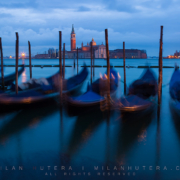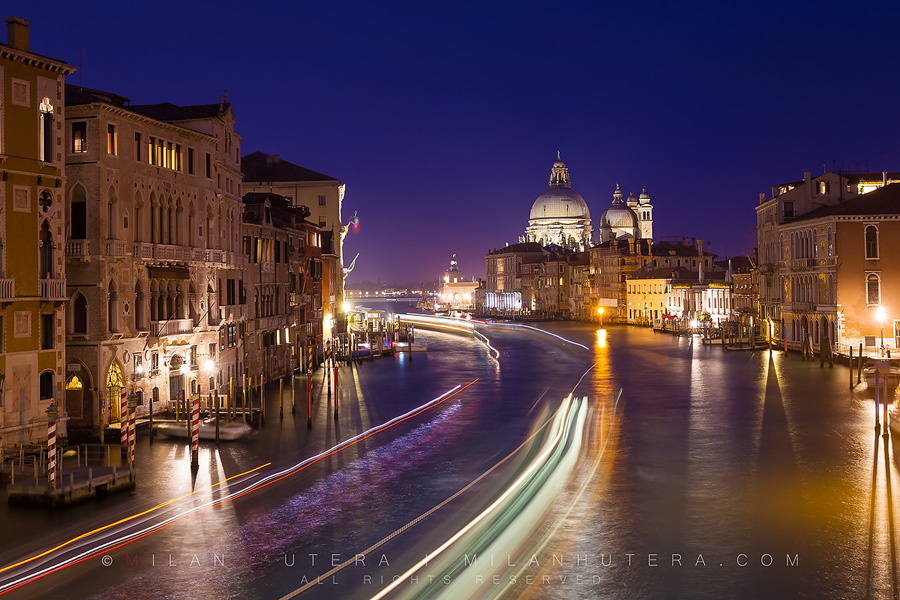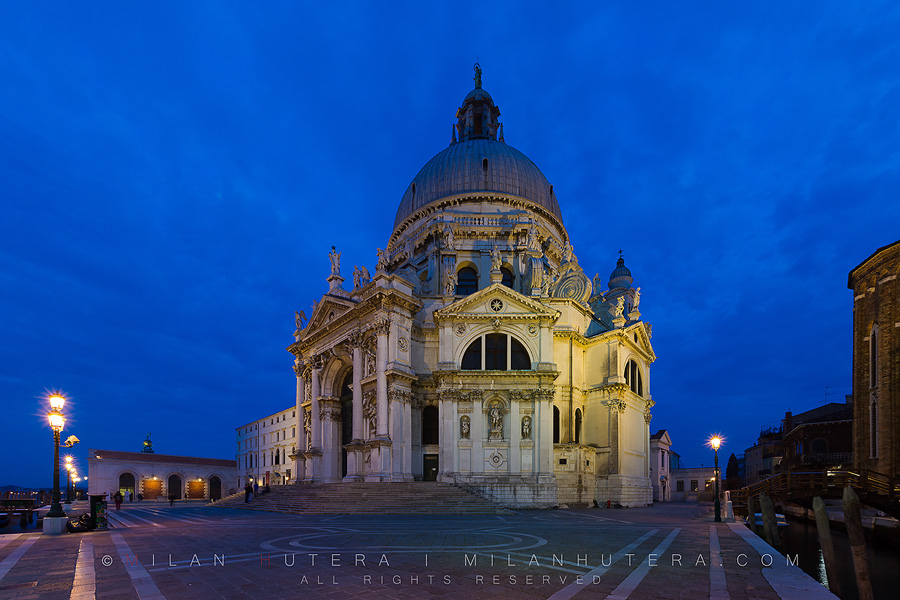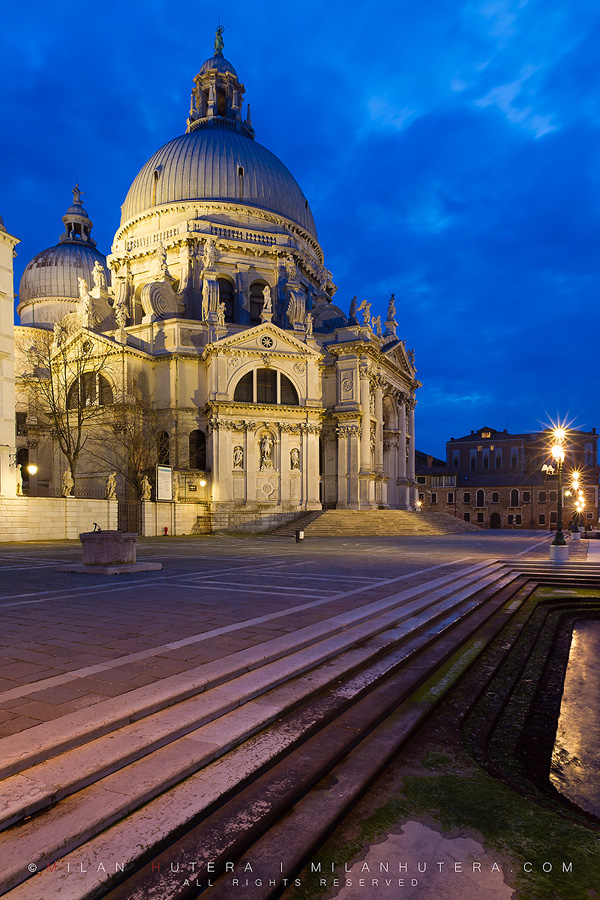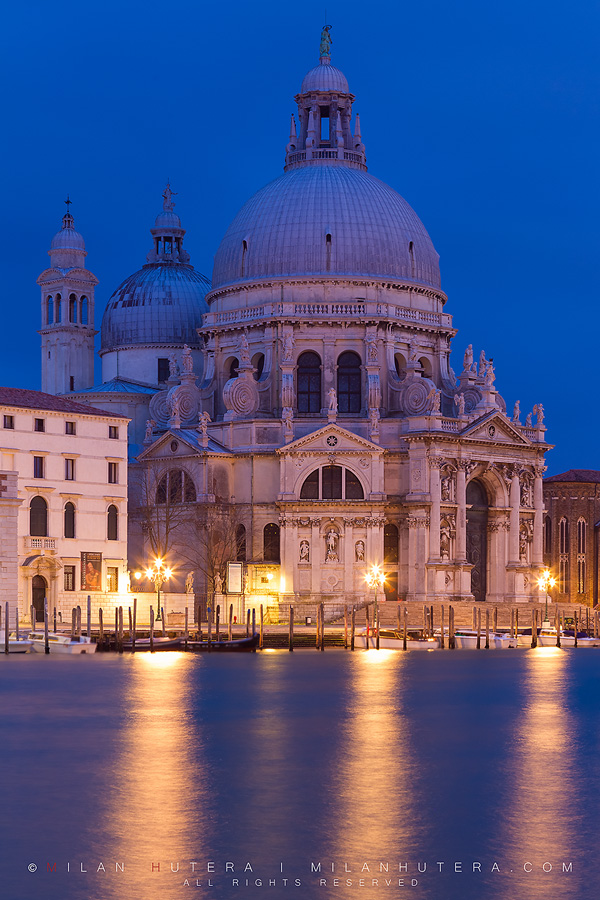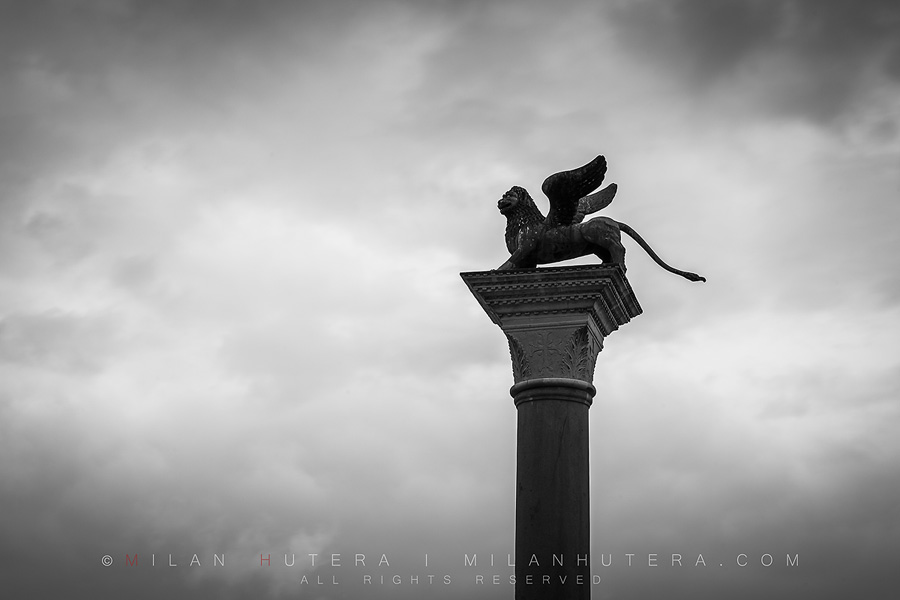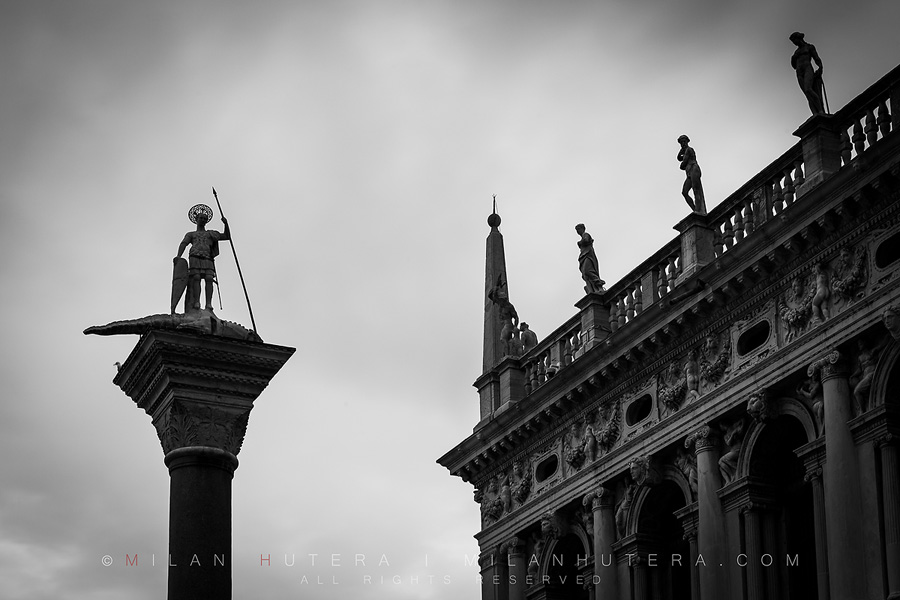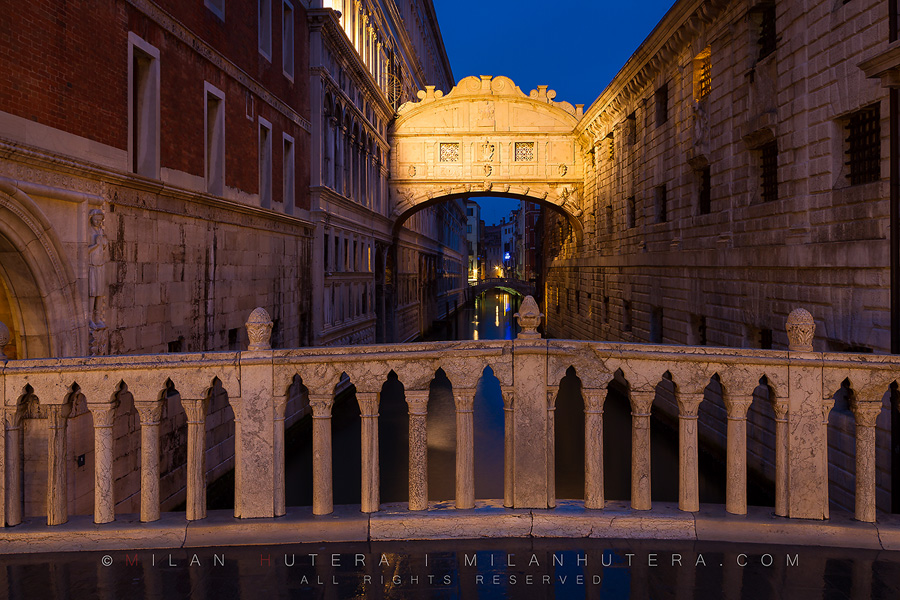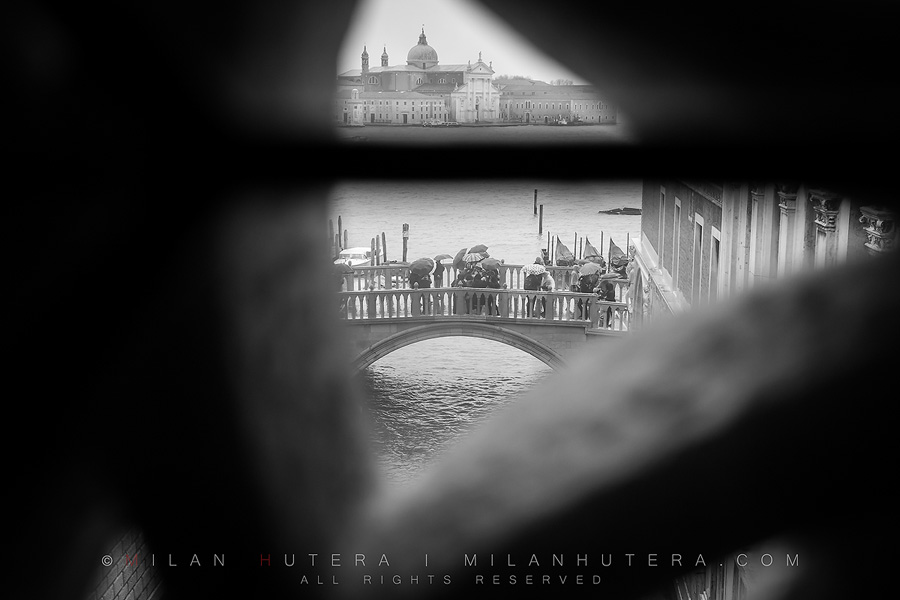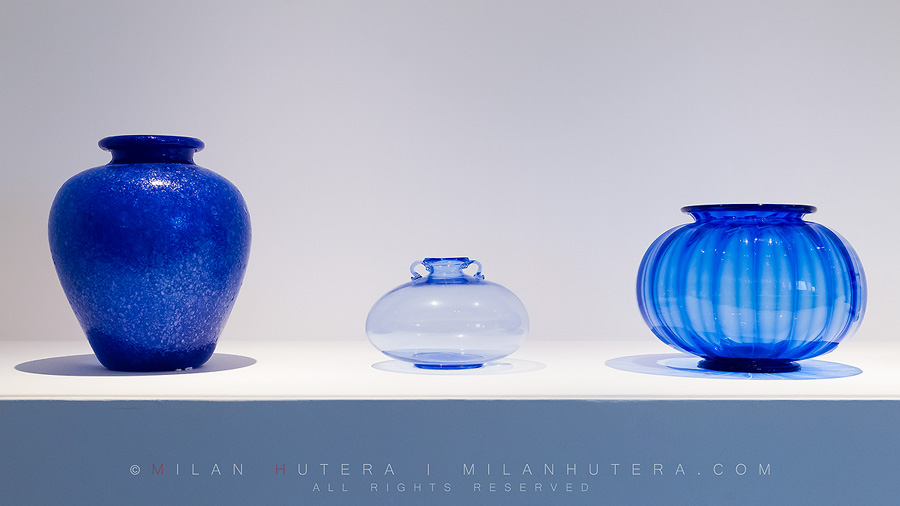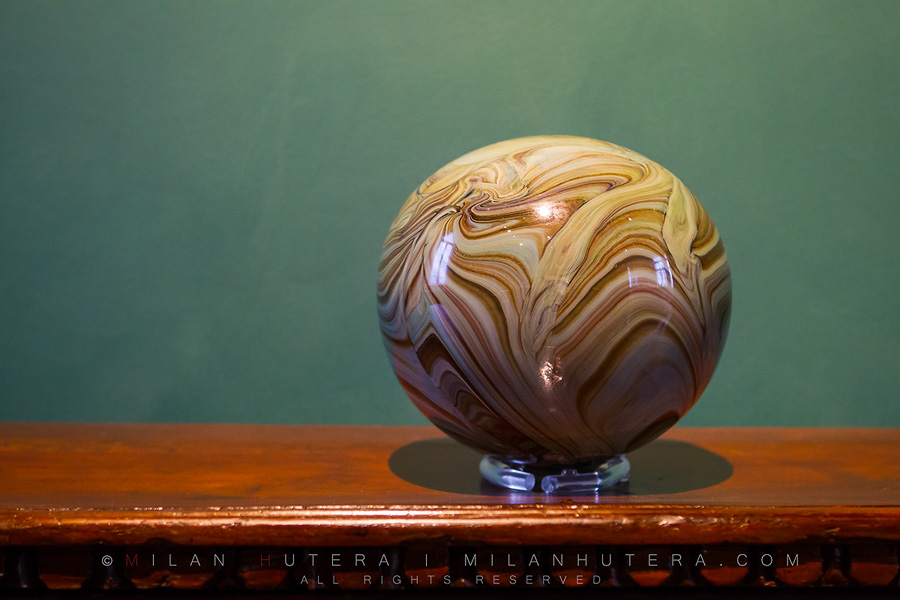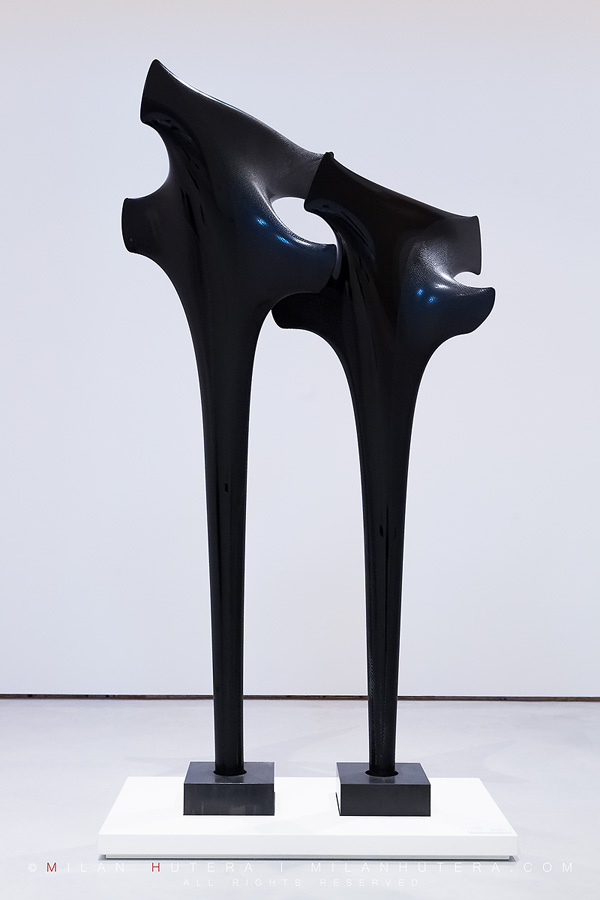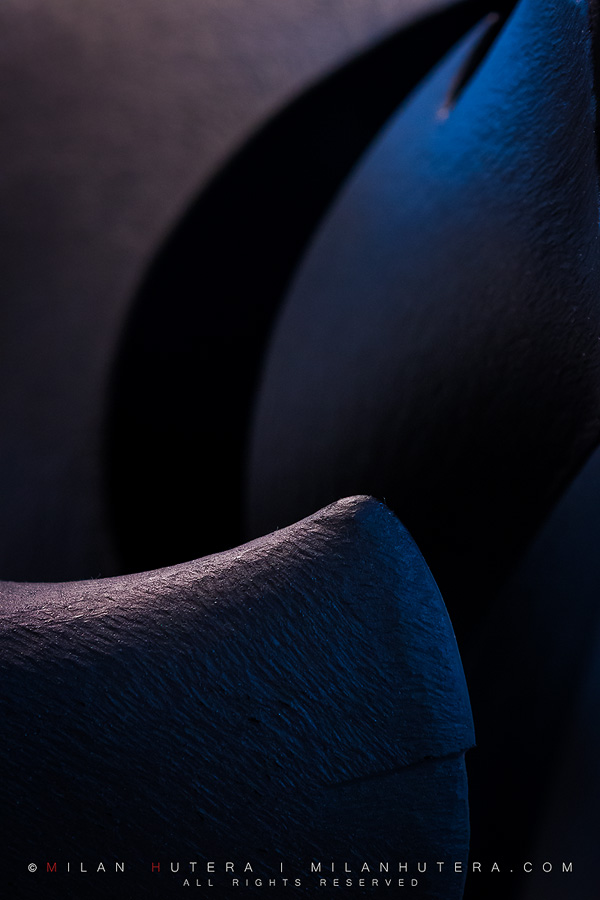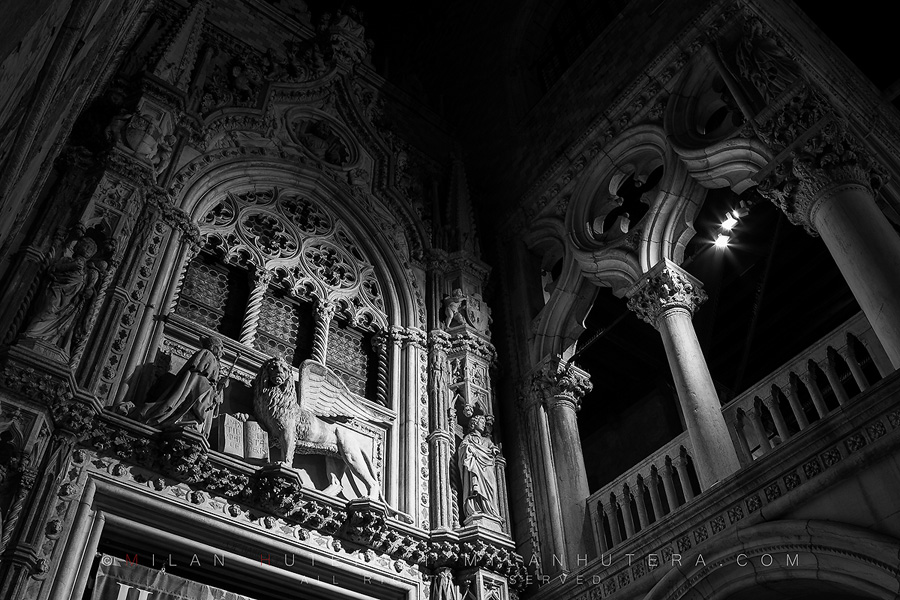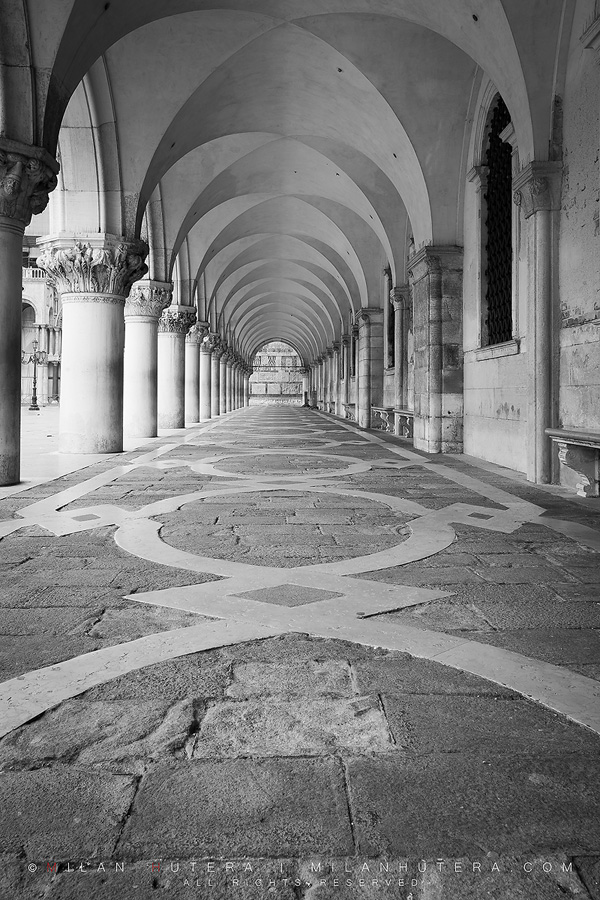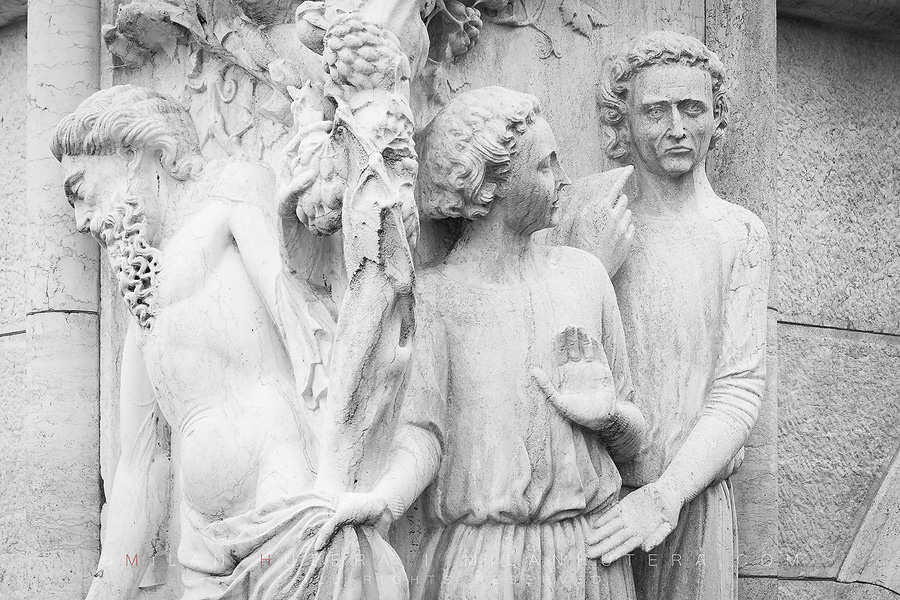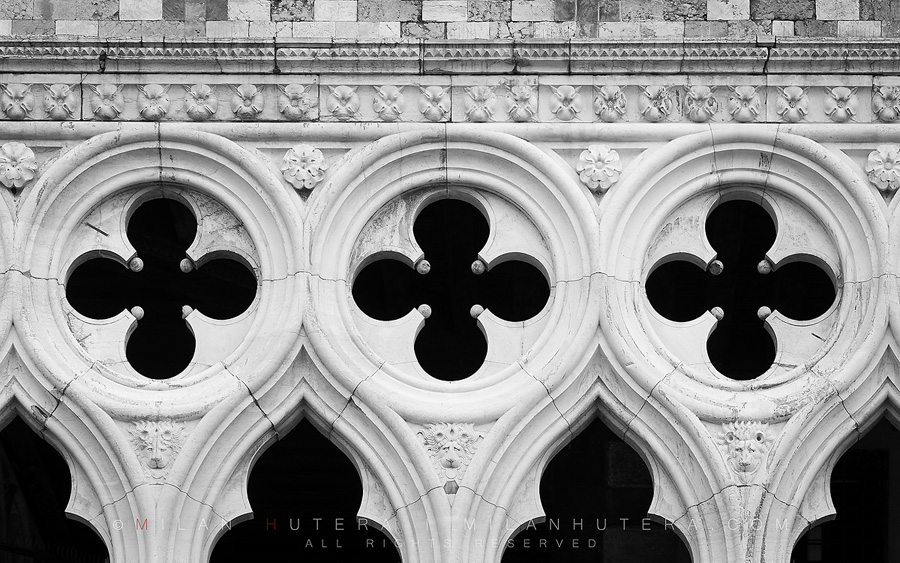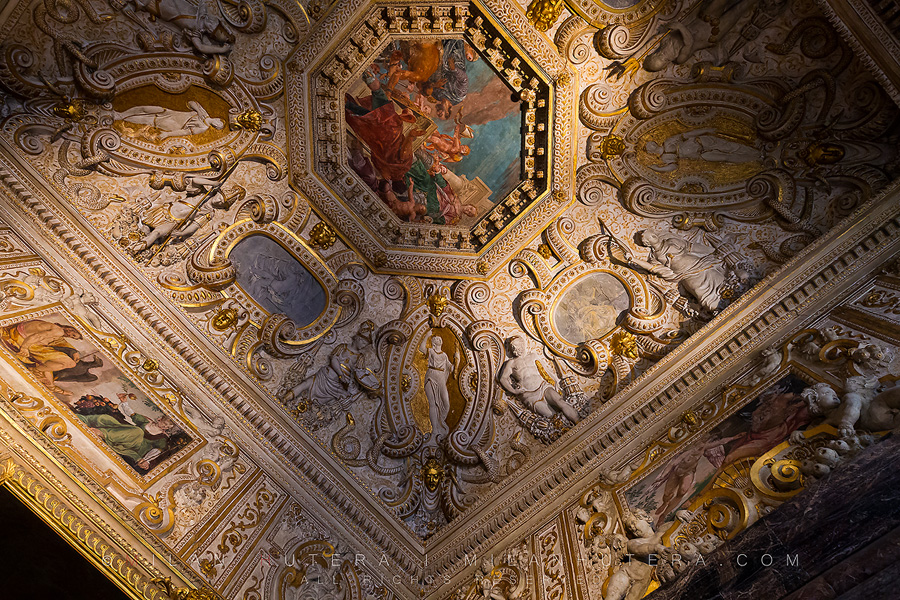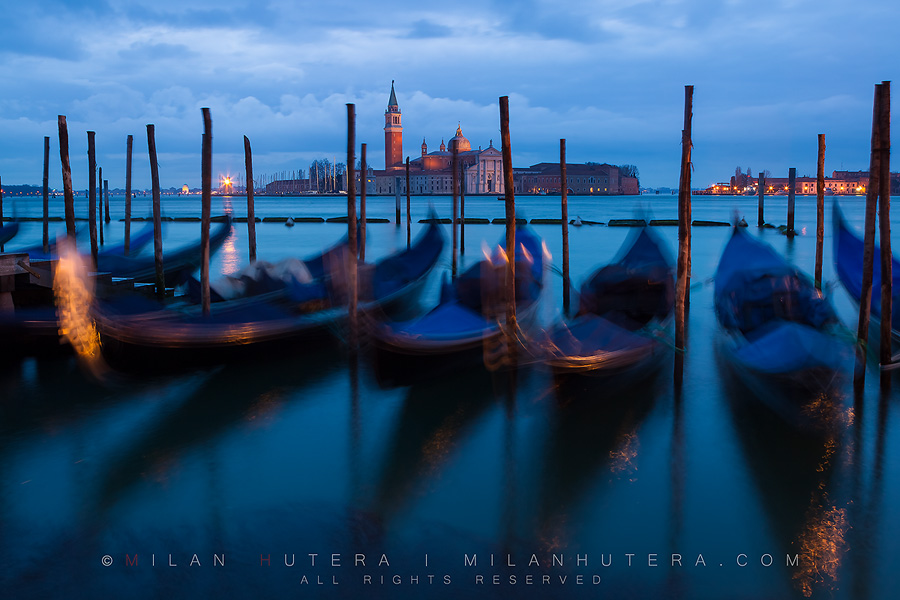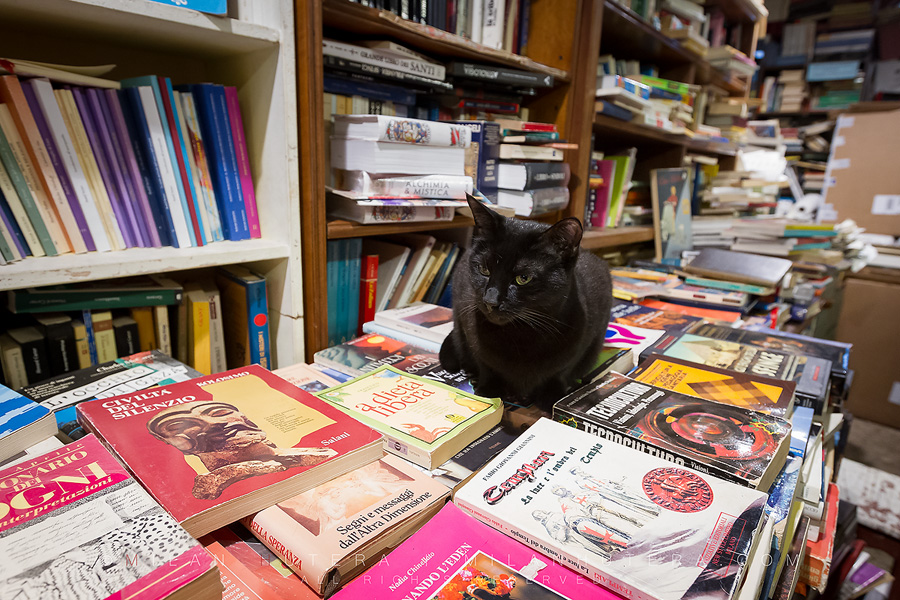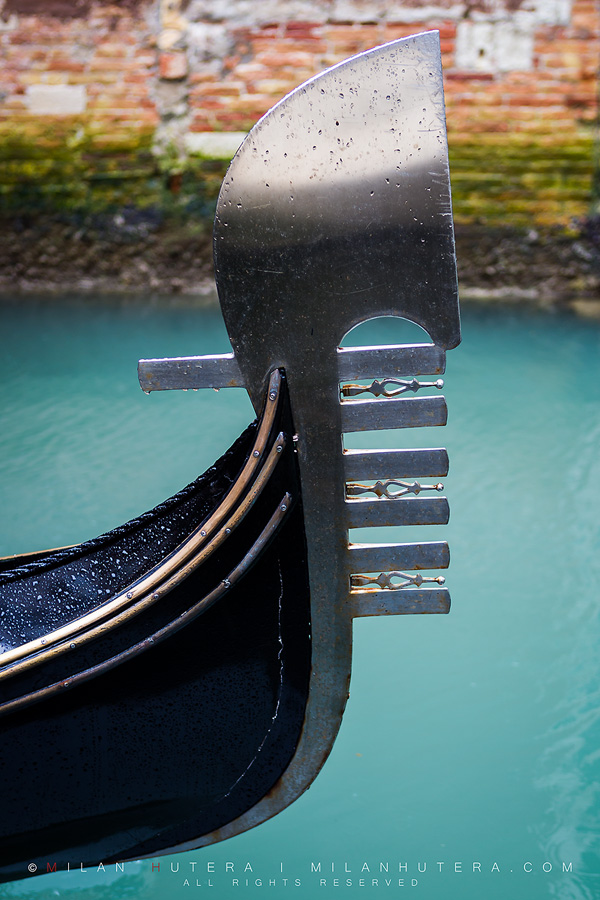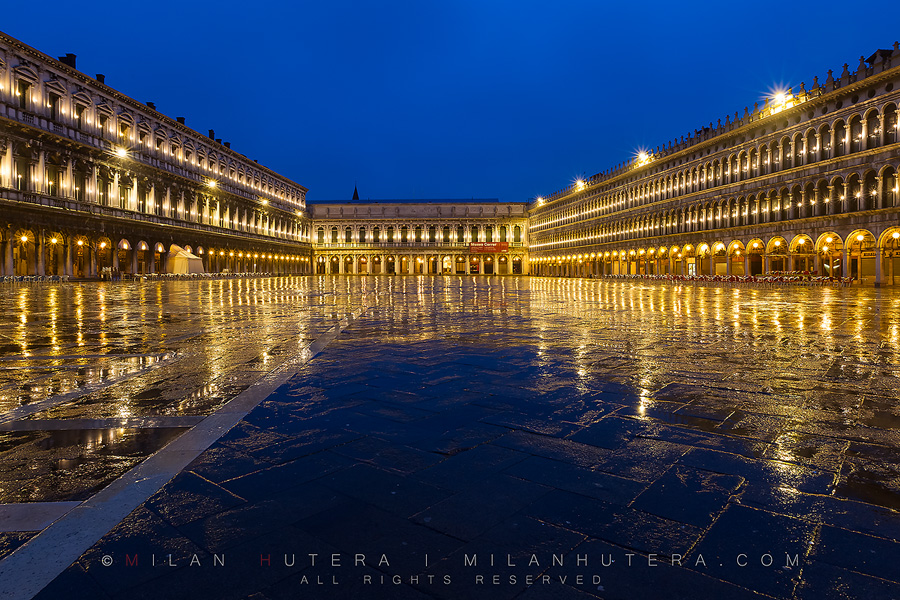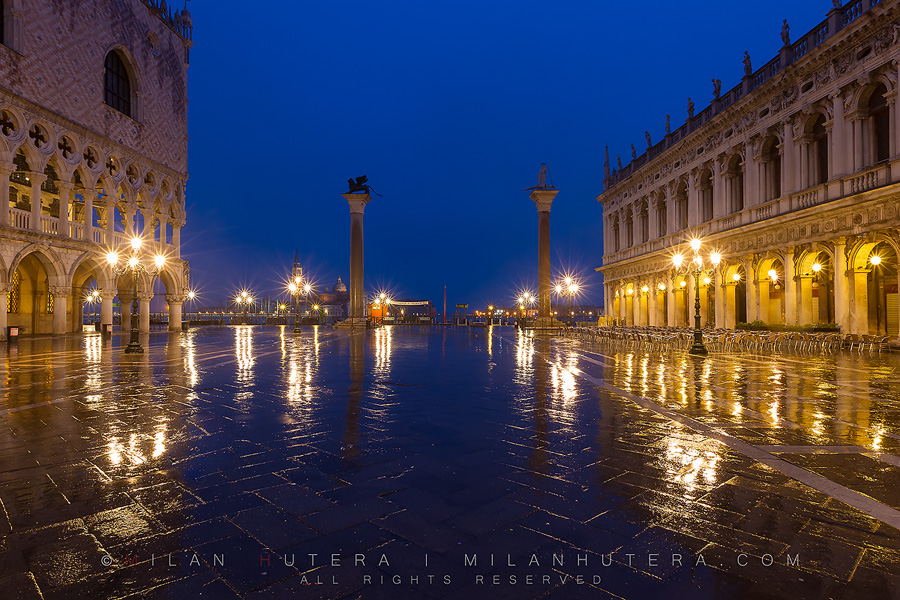Rainy Day Blues in Venice
“Ah, Venice!” The famous line from Indiana Jones and The Last Crusade says it all. Staying in Venice is anything but boring. Sailing around in a vaporetto, emerging from the catacombs on a well known piazza or fooling around with Elsa Schneider. The real life Venice is no different. Over the years, I found out many people are prejudiced against visiting Venice. Apparently, Venice is dirty, smelly, and overrun with couples in love. If you’re looking for these things, you will certainly find them here. I much rather search for beauty, uniqueness, history and atmosphere of the place. I first searched for these things in 2007 and in spring of 2015, I had the opportunity to visit Venice again. My visit was, however, affected by almost constant rain. The photos I got on this trip are substantially different than I planned. …
A Salute to Santa Maria
Santa Maria della Salute is probably the most recognizable Venetian church after Saint Mark’s Basilica. During my first visit, it was undergoing a major maintenance and the dome was covered in scaffolding. I was really happy that nothing obstructed the view this time around and I could make a couple of nice photos. At least from the outside. You can take photos inside, but if you want to use a tripod, you need a permission from local authorities. I’ll try to get it next time I’m there.
I took three photos of Santa Maria during the first evening. The first one is probably the most famous view of Gran Canal from Ponte dell’ Accademia bridge. You can take a photo of this scene anytime of the day, but after sunset it really comes alive. The Gran Canal is the throughfare of Venice. Just swap the tarmac for waterway and cars for boats. The evening rush hour looks like this:
Before I made the “rush hour” photo, I also made this photo of the Santa Maria waterfront. The incredible crowds that visit the church during the day was already reduced to a handful of people, sitting or standing on the steps.
Eventually, everyone went home or to the hotel. It kind of pays off to be a starving photographer for a while.
The next morning I made another photo of Santa Maria. This time from the other side of Gran Canal.
Hommage á Michael Kenna
In case you’re not familiar with Michael Kenna – he’s a British photographer famous for his black and white landscape photographs. He still shoots film, most notably on Hasselblad medium format, which natively outputs photos with square aspect ratio. I own one of his photo books, Mont Saint Michel, which was published in 2007 and depicts this breathtaking island located in Normandy. In one of the interviews, Michael stated that he doesn’t like to shoot scenes and sceneries with people that much and this is one of the reasons why he prefers to work at night. In the last 30 years, he frequently visited Venice as well. In 2010 he published a book of his venetian photographs, simply called Venezia. I hope I’ll be adding this book to my shelf soon.
However, I must add, that you probably have to be “in the mood” for viewing Michael’s photographs. Thanks to the dark, night sky and black and white rendition, I find his photos somewhat bleak and depressing. Nevertheless, they can be inspiring and often times offer a completely different view on the places that are mostly overrun by tourists. During my visit to Venice, I made two photos as homage to Michael’s work and will also present some other photos in black and white.
The first photo depicts a winged lion, located on one of the columns next to Doge’s palace. The dark morning sky made a perfect backdrop to this photo, that Michael himself made as well.
The scene captured on the second photo is located just a few meters away. The second column on Piazetta San Marco houses a statue of Saint Theodore, who was the patron of Venice before Saint Mark.
Incomperhensible Bridge of Sighs
Bridge of Sighs (Ponte dei Sospiri in Italian) is a covered bridge that connects the Doge’s Palace and a nearby Prison. It was built around the year 1600. The legends of old say the condemned saw the last of Venice through its windows and they could do nothing but “sigh” at the loss of their freedom. Some modern legends say that eternal love will be granted to those who kiss under the bridge during a Gondola ride, during the sunset, while the toll of Saint Mark’s bells can be heard…. Oohkay…. These says, the Bridge of Sighs is one of the most popular attractions of Venice. And to this day, I cannot understand why…
For starters, the bridge is not that beautiful. It’s rather short and located in a narrow, dark canal. However for some reason it attracts throngs of tourists every day. And for some reason, each and every one of them needs to make a selfie with the bridge, using their own hands. Or worse – selfie sticks. I had to do it differently. I arrived to the bridge in early morning. Luckily, there’s no signs of tourists at 5:15 AM. I made the first shot. And I was instantly disappointed. The canal under the bridge was dark and murky. I quickly came up with different composition and included the banister, that prevents all those tourists ending up in a canal every day.
The tiny barred windows offer nothing but a glipse of the beautiful Venice. Or not, if the poor bastard was condemned on a rainy day. Looking out of the windows I could see the rainy weather, Venetian lagoon and parts of San Giorgio Maggiore. And I did sigh. Despite the rain, throngs of tourists were making selfies with the bridge.
I don’t have to be interrogated in the facilities of Doge’s Palace, nor thrown into the rocky prison next to it to admit I don’t have that much talent for photography. For the last photo of Bridge of Sighs, I borrowed the composition from Italian photographer Paolo de Faveri. He too created a very similar looking panorama of Ponte della Paglia, Doge’s Palace and the Bridge of Sighs. Even the the weather, during which both photographs were made, was very similar. However, there are some differences. I positioned myself a little differently and on my photo you can see through the arcade under Doge’s Palace.
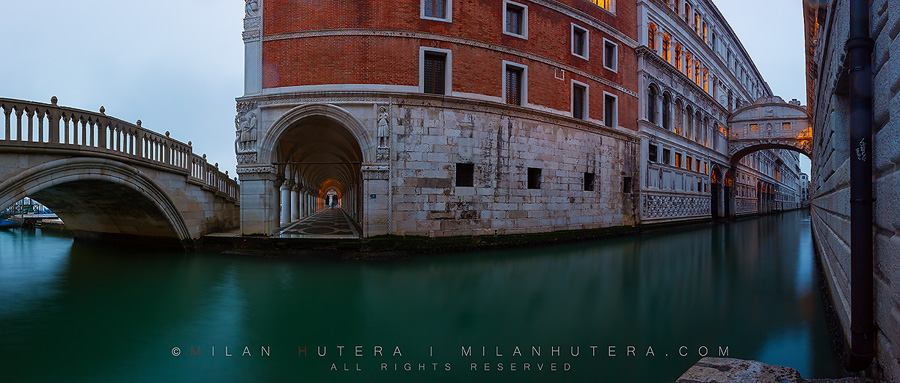 On the full size photo, you can even see “The ghost of Doge”. It’s a silouette of a man, who took a shelter there from the horrible rain.
On the full size photo, you can even see “The ghost of Doge”. It’s a silouette of a man, who took a shelter there from the horrible rain.
The beauty of Murano glasswork
If you’re planning to spend more than one afternoon in Venice (yes, there are many travel agencies in Europe, who offer 1 day or 1 afternoon trips to Venice), you must definitely visit the Glass museum – Museo del Vetro, on the island of Murano. The artisans on Murano island are renowned for their top quality glass work. In past, many glass working techniques have either been invented or perfected on Murano. Perhaps the most famous technique invented here is called “milk glass”.
I’m not sure if it was because of the constant rain or the distance, but there was hardly anyone in the Glass museum. The journey from Saint Mark’s square is quite tedious and takes approximately an hour. But it’s well worth it. You’ll find many stunning examples of glasswork spanning many centuries, including chandeliers, glasses, goblets, decorations and of course vases.
However, Murano glass can take many forms and shapes.
Between February 9th and 30th May, you could visit an exhibition dedicated to well known Murano artist and sculptor Luciano Vistosi. Vistosi learned the art of glass making in his father’s workshop. Later, he focused on creating high quality glass artwork that reflected the latest trends in design. Vistosi passed away in 2010 and over the years, his sculptures were photographed by the premier Italian photographers. Here are some of my photos of his sculptures:
Most people would probably consider this to be too “artsy fartsy”. However, the sculptures are incredibly detailed, with amazing textures. When they are properly lit, one could spend many hours photographying the lightplay in the countless number of compositions. If Vistosi would be able to visit his exhibition, he’d be greatly displeased by the amount of dust on his sculptures. During the post processing, I had to remove a considerable amount of dust particles from the surface of the sculpture.
At the end of my visit to the Glass museum, I was slightly disappointed. I’d discovered a beautiful brochure about the history of glass making on Murano at the museum’s book store. However, it was only in Italian. When I asked the vendor about the English version, his only words were “Sorry, sold out”. Another reason to return….
The details of Doge’s Palace
Doge’s Palace is a center of political, social and cultural life in Venice. More than a milion tourist visit it each year. At first glance, the building looks quite ordinary, especially from a distance. But upon closer inspection, you’ll find lots of fine and memorable details. Inside, you’ll find stunning art pieces, beautifuly crafted ceilings in almost every room and one of the largest chambers in Europe. Because of on going maintenance of Saint Mark’s Basilica and constant rain, I decided not to do many grand views of the Palace. I focused on smaller details instead.
Porte della Carta is a ceremonial entrance to the palace. It’s a shame that it’s somewhat hidden between the Palace and the Saint Mark’s Basilica. This Gothic masterpiece was built by Italian sculptor Bartolomeo Bon between 1438 and 1442. The statues of Doge Fracesco Foscari and Saint Mark’s Lion are the centepieces of the gate. It is lit by a couple of spotlights during evening hours.
The arcade under the Doge’s Palace is swarming with tourists during the day. But you make it there early in the morning, it’s usually completely empty. But once I snapped away a few photos of this classic composition, the cleaning brigade started their daily routine. All those broken selfie sticks and umbrellas need to be cleaned before the littering tourists come again. This vicious circle cannot be beaten, unfortunately.
The facade of Doge’s Palace contains several statues and reliefs. The most accessible is located on the corner of the Palace, next to Ponte della Paglia bridge. If you’re standing on the bridge, you can almost touch it. If you find the gentleman on the left a bit “under the weather”, you’re correct. This relief depicts the biblical scene called Drunkeness of Noah.
The famous arcade on the first floor is probably one of the most memorable aspects of the Palace.
Once you get inside, you’ll find many breathtaking paintings and absolutely incredible ceilings in almost every room. This photo of a ceiling is from one of the smaller rooms in the Palace.
In addition to all those ceilings and paintings, the Doge’s palace also has a large selection of old letters, peace treaties and naval maps. They all show how important the Venetian republic was back in its day. But like most of the exhibits, no photograph can truely show their beauty. You have to see them in person!
Island dreaming
The monks dedicate their days to contemplation, meditation and prayers. One of the most important monasteries in Venice was established in 10th century on the island of San Giorgio Maggiore. Over the centuries, this benedictine monastery became one of the most important religious and cultural places in Italy. In 19th century it fell to ruin and was used as a military warehouse for some time. It was restored in mid 20th century and it’s now the headquarters of Cini foundation.
For us photographers, the time for contemplation, prayers and meditation comes during the so called blue hour. It’s a part of the day, when the sky turns dark blue. It usually happens about an hour before the sunrise and an hour after sunset. If you want to capture the blue hour in the morning, be prepared to wake up early. The summer mornings are especially difficult. Sometimes, being on the spot at 3AM might be too late, depending on the weather and clouds in the sky. During my visit to Venice, I managed to capture the island of San Giorgio Maggiore during the rain-less blue hour.
The most notorious view of the island must contain the Gondolas. This six second expousre shows the movement of Gondolas and their “parking poles” by incoming waves from the lagoon.
It was raining the next morning, but the view of the island from Ponte della Pagila is worth seeing in any weather.
Maybe I was bothered by the constant rain, maybe we could plan the sightseeing part better. But to this day I have not visited the island itself. The visit of the monastery is one of the top priorities for my next trip to Venice, whenever that might be.
If you’re allowed to shoot, make it count
Venetians are the people of many talents. It certainly took a lot of talent and courage to build this magnificent city and to create a powerful navy that ruled the Adriatic sea. Nowadays they tempt you with countless museums, art shows and culinary experiences found in the most unexpected places. And they make your life a misery by constantly forbidding the photography. Especially in the mask shops. The mask is a tangible product. If I take a photo of it, I will hardly run back home and make an exact copy of it. Luckily, renowned mask workshops allow visitors to photograph the displayed masks. All you need to do is be polite and ask beforehand.
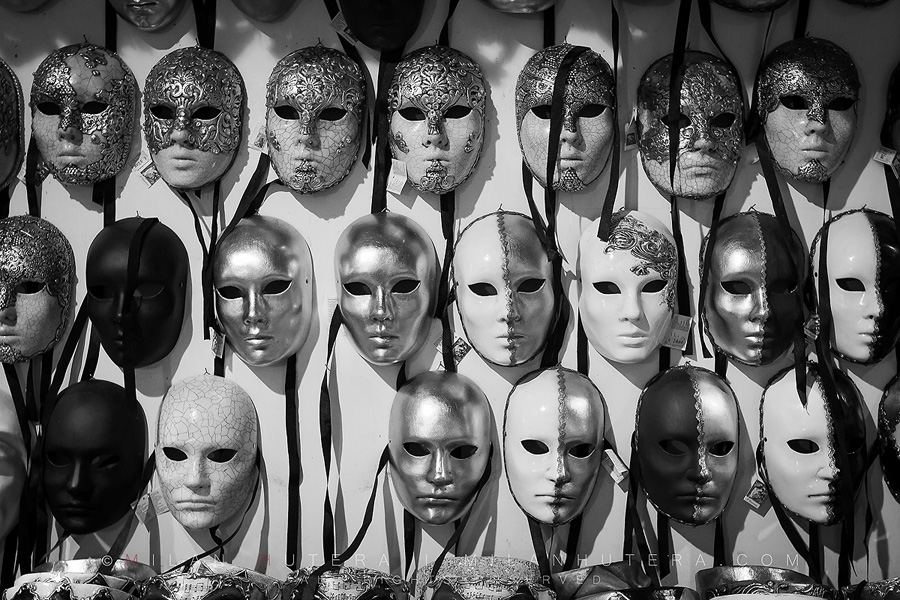 In past, the masks were used primarily for the famous Venetian carnival and other forms of entertainment. But they also served as a protection for doctors in times of plague or other highly contagious diseases. That is why the mask with large beak is called “Il dottore“. After the fall of Venetian republic, the craft of making the masks was forgotten. In the 80s, the tradition of Venetian carnival was reinstated, but the process of mask making had been forgotten. The workshpos had to be reopened and they also had to dig into the archives and re-discover how to make the masks for this ocassion. During my trip to Venice I visited two renowned workshops. The first workshop pioneered the rediscovery of the process of mask making. They also issued a nice brochure about the Venetian masks that I purchased. The second workshop, pictured above, offers a beautifully decorated, high quality masks. Both workshops supplied various masks for Stanley Kubrick’s last movie – Eyes Wide Shut. I won’t tell you the names or locations though. I’d take the fun out of researching and exploring Venice.
In past, the masks were used primarily for the famous Venetian carnival and other forms of entertainment. But they also served as a protection for doctors in times of plague or other highly contagious diseases. That is why the mask with large beak is called “Il dottore“. After the fall of Venetian republic, the craft of making the masks was forgotten. In the 80s, the tradition of Venetian carnival was reinstated, but the process of mask making had been forgotten. The workshpos had to be reopened and they also had to dig into the archives and re-discover how to make the masks for this ocassion. During my trip to Venice I visited two renowned workshops. The first workshop pioneered the rediscovery of the process of mask making. They also issued a nice brochure about the Venetian masks that I purchased. The second workshop, pictured above, offers a beautifully decorated, high quality masks. Both workshops supplied various masks for Stanley Kubrick’s last movie – Eyes Wide Shut. I won’t tell you the names or locations though. I’d take the fun out of researching and exploring Venice.
Another well known spot is the second-hand bookshop with a gondola bookshelf. When I asked about making some photos, the owner just waved his arm and continued his conversation with his acquaintance. Since it was early afternoon, my guess is, he had answered this question for 287th time that day.
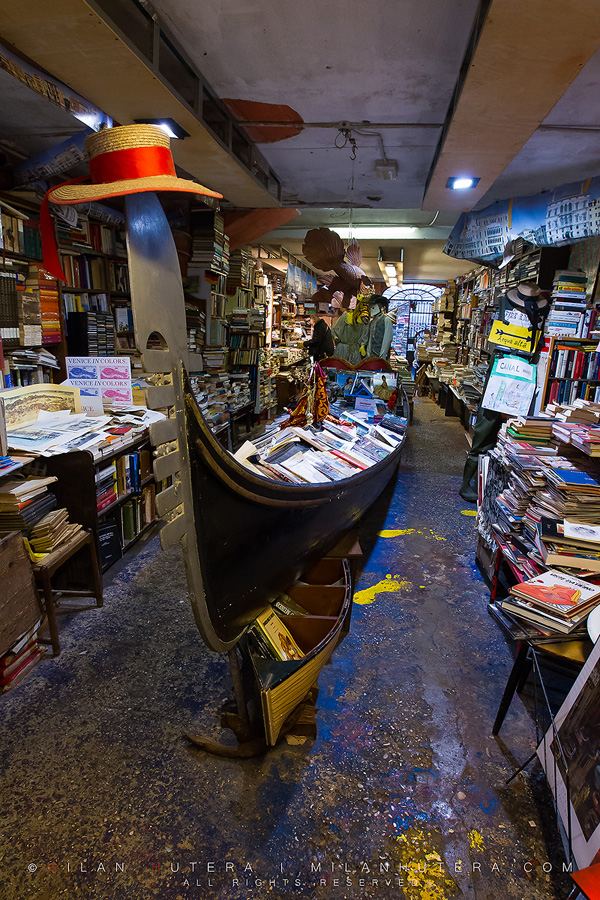 You can find lots of interesting books in this “dump”, both old and new. I found an unopened book from Taschen, dedicated to some classic painter. It was exactly 1 cent dearer compared to the official Taschen webstore. I was amazed, because everything needs to be carried by boats and by hand in Venice. When I first published the Slovak version of this blog in June, some shark from an investment group gave an interview, where he stated that Austrians don’t know how to do business properly in their ski resorts. His investment group owns majority of ski resorts in Slovakia and if you’ve ever ski both in Austria and Slovakia, you’d laugh him out. The prices and services in Slovakia are terrible compared to Austria. I wonder what he’d say about the prices in this bookstore….
You can find lots of interesting books in this “dump”, both old and new. I found an unopened book from Taschen, dedicated to some classic painter. It was exactly 1 cent dearer compared to the official Taschen webstore. I was amazed, because everything needs to be carried by boats and by hand in Venice. When I first published the Slovak version of this blog in June, some shark from an investment group gave an interview, where he stated that Austrians don’t know how to do business properly in their ski resorts. His investment group owns majority of ski resorts in Slovakia and if you’ve ever ski both in Austria and Slovakia, you’d laugh him out. The prices and services in Slovakia are terrible compared to Austria. I wonder what he’d say about the prices in this bookstore….
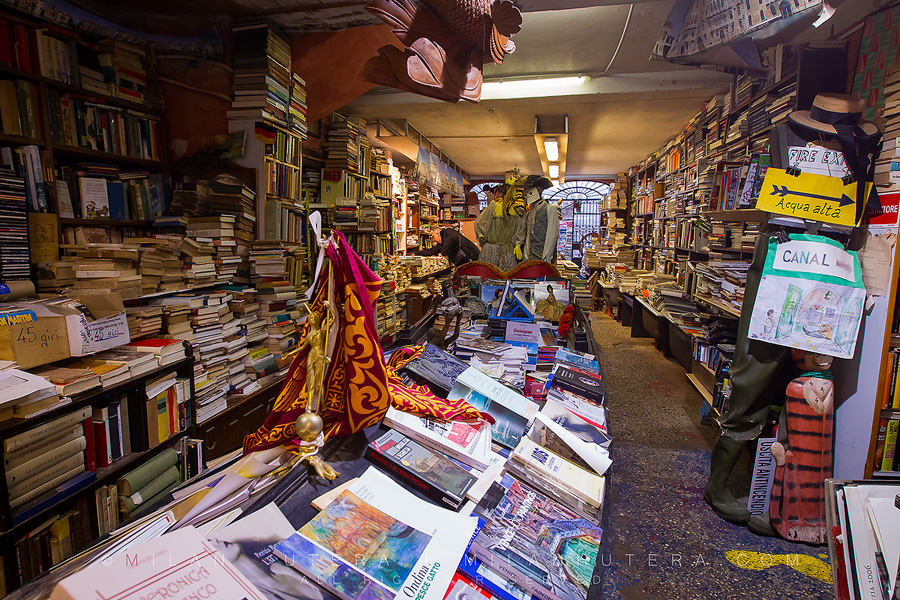 Some day in distant future, an investment group will purchase this bookstore for sure. There will be admission and security. But until then, the store and its books is under protection of this guy…
Some day in distant future, an investment group will purchase this bookstore for sure. There will be admission and security. But until then, the store and its books is under protection of this guy…
We are human and the well known fact is – humans make mistakes. It’s not that hard for me to admit I made a mistake here and there. Even though I was allowed to photograph in these shops, I did not do everything possible to make the photos of highest quality. Certainly, taking my time and working on tripod would’ve resulted in higher quality photos. But, I have yet another reason to return there.
Gondolas – a Venetian necessity
You cannot make a photoblog from Venice without the Gondolas. Period. This incredibly elegant boat made of eight kinds of wood consists of approximately 280 parts. And these days, the perfect romantic getaway in Venice apparently MUST include a ride on the Gondola. Well, I beg to differ…
If I was the Shakespeare in Love, or the Venice’s own Cassanova, I would not waste my money on this ride. Apart from considerable sum of money being lifted from your pocket, you often get an off-key version of ‘O sole mio. A song from Napoli. I’d rather take my love to experience the outstanding cuisine, beautiful atmosphere of some Venetian restaurants and to taste some excellent wine. You can find lots of wonderful restaurants in Venice, but also lots of awful ones. But I’m not going to talk about the food now. This is a “Photoblog”, not “Foodblog”. Some day, I might write a few words about my gourmet adventures in Venice. But back to Gondolas.
The front metal, S-shaped part of Gondola is called Ferro da Prorà. And it’s not just for show. Its purpose is to counter-balance the gondolier, standing on the far side of the boat. The six “teeth” in the front part represents the six parts of Venice. The lone tooth pointing backwards represents the island of Giudecca. The three ornaments between the front teeth represent the three venetian islands – Murano, Burano and Torcello. This centerpiece is beautiful in every kind of weather.
Mysterious and Green – such can be the mornings in the canals of Venice. Especially after the heavy rains.
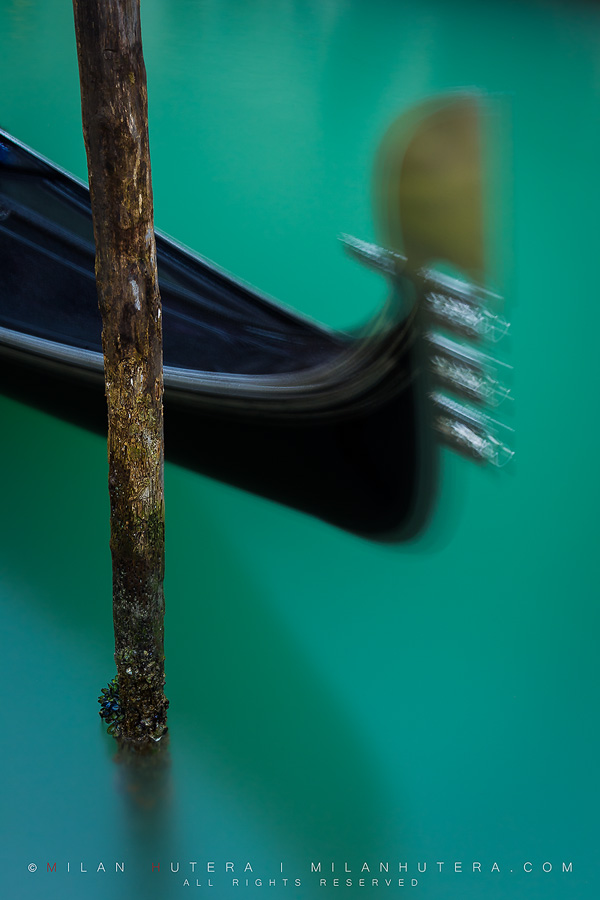 This “dreamy gondola” was in fact my last photo of this trip. However for the grand finale, let’s get back to the place ruled by two species – pigeons and tourists.
This “dreamy gondola” was in fact my last photo of this trip. However for the grand finale, let’s get back to the place ruled by two species – pigeons and tourists.
Rainy Day Blues
Saint Mark’s Square, or Piazza San Marco, is the main square of Venice. During the day, it’s mostly overrun by tourists. During the night, it’s under the dominion of pigeons. Just after dark, another kind of creature can be found here – a caste of people making their living by selling selfie sticks, umbrellas and glowing propellers. Depending on if it’s raining or not and what other attrocious souvenir is currently “in”. But is it possible to be completely alone here? Take a look at this photograph and see for yourself:
Most people don’t realize this, but Saint Mark’s Square actually consists of two squares. The more interesting one, with the Doge’s Palace and the overview of Isola di San Giorgio Maggiore is called the Piazzetta. On that dreadful morning, hectoliters of water were pouring out of the sky, but that didn’t stop me from making the photo, that has eluded me for the past several days.
It might seem that I was completely alone on Piazetta that morning. But there was another photographer, standing just outside the frame. However, he was vastly better equipped for this kind of weather than me. So I made a mental note – never leave a hotel in Venice without an umbrella!
Epilogue
My visit to Venice in March was imperfect, just as this blog is imperfect. Why? For starters, there are only 29 photos in it. It would be nice to have a round number, don’t you think? I think if I included a photo of the musical quartet, that was making a nice atmosphere on Saint Mark’s square during the first evening,would kind of ruin this set. I also think the rainy message from the heavens speaks clearly: “You’re not done in Venice.” So far I’ve spent seven days in Venice and there’s still so much to see and experience. In another words – there are always good reasons to return to Venice.

